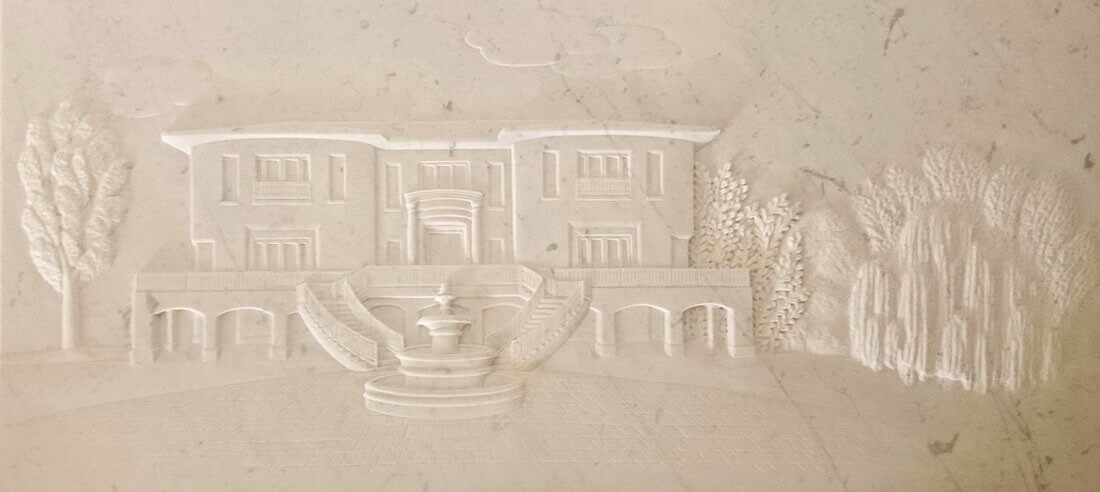
Artistic techniques of manufacturing and decoration of the marble
In the marble tradition there are different artistic techniques to realize and embellish a work.
These methods are grouped by two main categories, even if in some cases they can be confused with one another because the differences are minimal:
- techniques of manufacturing
- techniques of decoration
ARTISTIC TECHNIQUES OF MANUFACTURING:
FLATTENED RELIEF
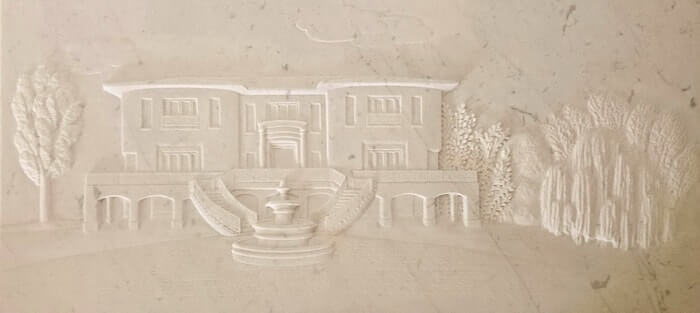
Flattened relief
Realization of drawings and images with a minimum relief, decreasing from the top to the bottom to get a pictorial, illusionistic depth effect. It is also known as “shallow-relief”. The artist Donatello was the inventor and the master of this artistic manufacturing.
This sculptural technique, used in the Renaissance, is also applied to the manufacturing of cameos, medals and coins.
BAS RELIEF
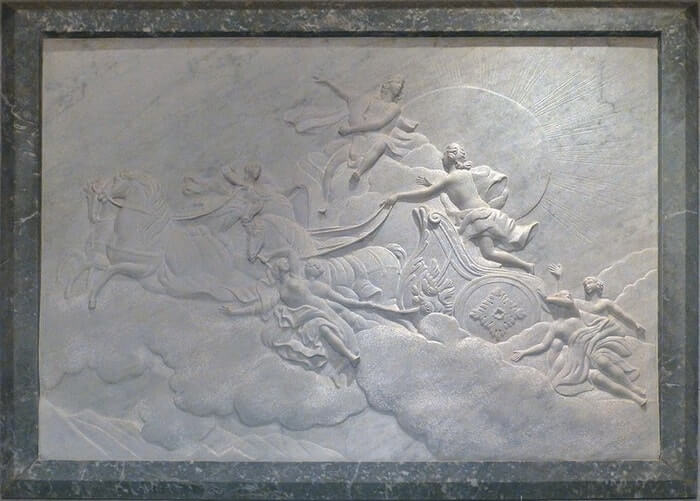
Bas relief
Representation of figures on a background plane, with a superior relief to the flattened one but reduced in comparison to the sculptures in high relief and in the round. Sometimes the image can appear distorted depending on the angle of vision.
This method has been used both by the ancient people of Egypt, Mesopotamia, India and China and during the Middle Ages and the Renaissance. Today, this type of manufacturing, is used all over the world.
HIGH RELIEF
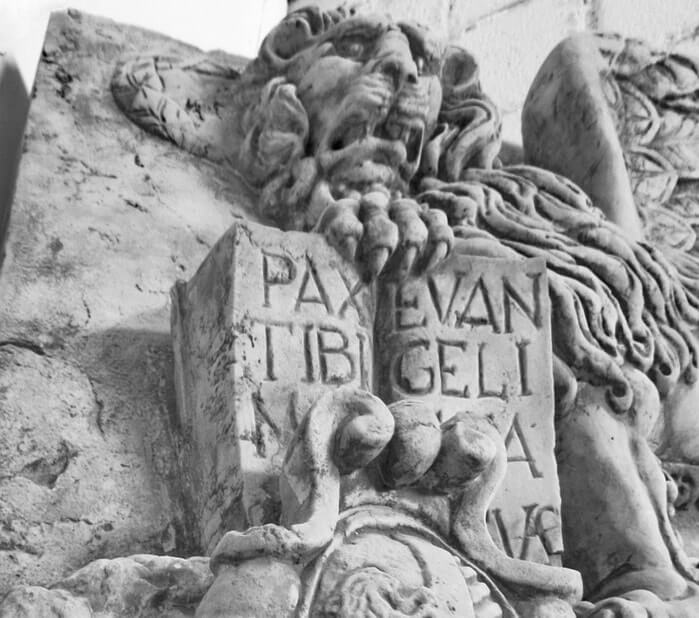
High relief
The figures are made with an important relief compared with the background plane; often, the whole thickness of the slab is worked with some parts realized in the round.
UNDERCUT
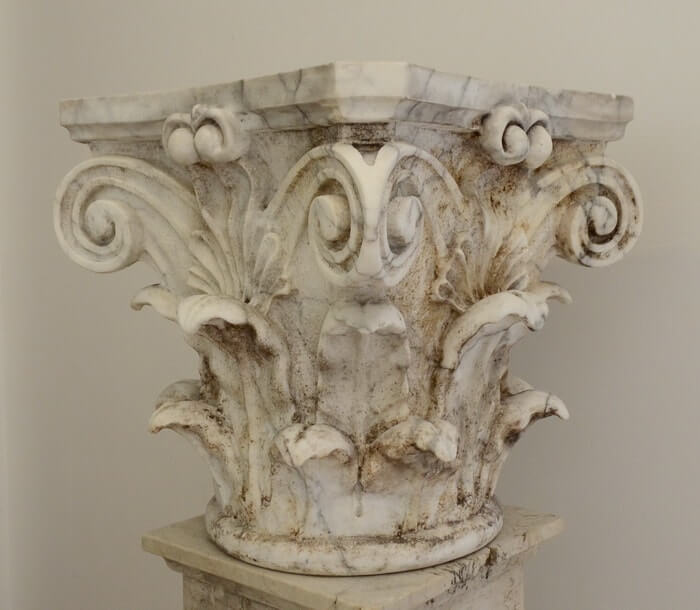
Undercut
Manufacturing of deep cavities that create an acute angle with the background plane of the work, in other words also the part that is not in sight is carved.
IN THE ROUND
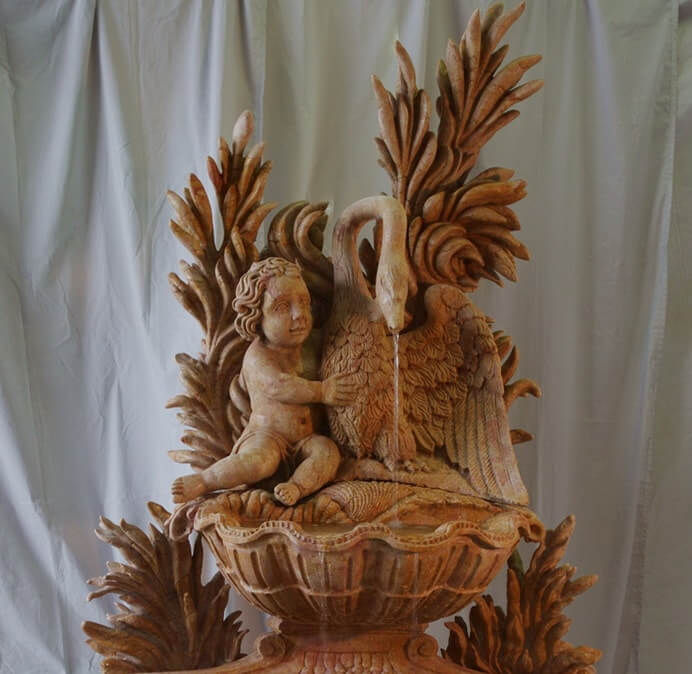
In the round
The figure appears three-dimensional, without any background plane. The classical example are the statues because they can be observed all around, even if the main sight, preferred by the artist, is only one.
All these techniques, in the manufacturing of some works, are often mixed and integrated with one another.
For example, we used them together to realize an exclusive monumental couple of fireplaces. Go to the case history.
ARTISTIC TECHNIQUES OF DECORATION:
ENGRAVING
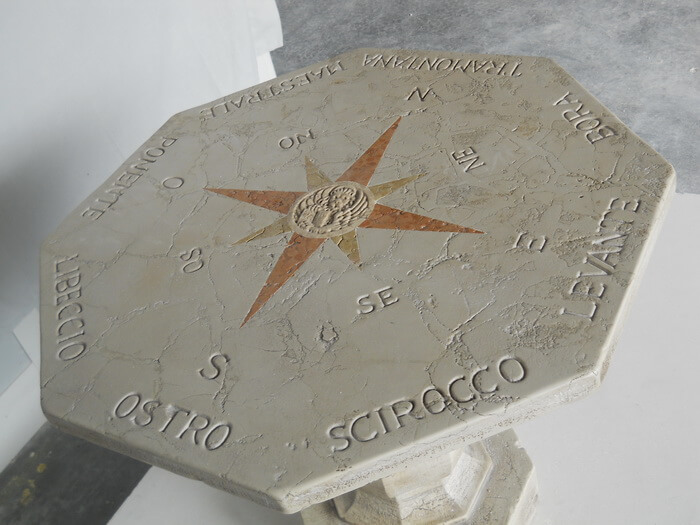
Engraving
Execution of a drawing with a point on a hard surface, with different depth gradations.
The engravings were already realized in the prehistory: on the walls of the caverns and on the stone to represent rocky images with wild animals or abstract and symbolic drawings.
In the Middle Ages, the graffiti represented a popular art and a technique to realize refined and prestigious works; they were used for narrative and decorative reasons on wood, bone and ivory objects.
INLAYING
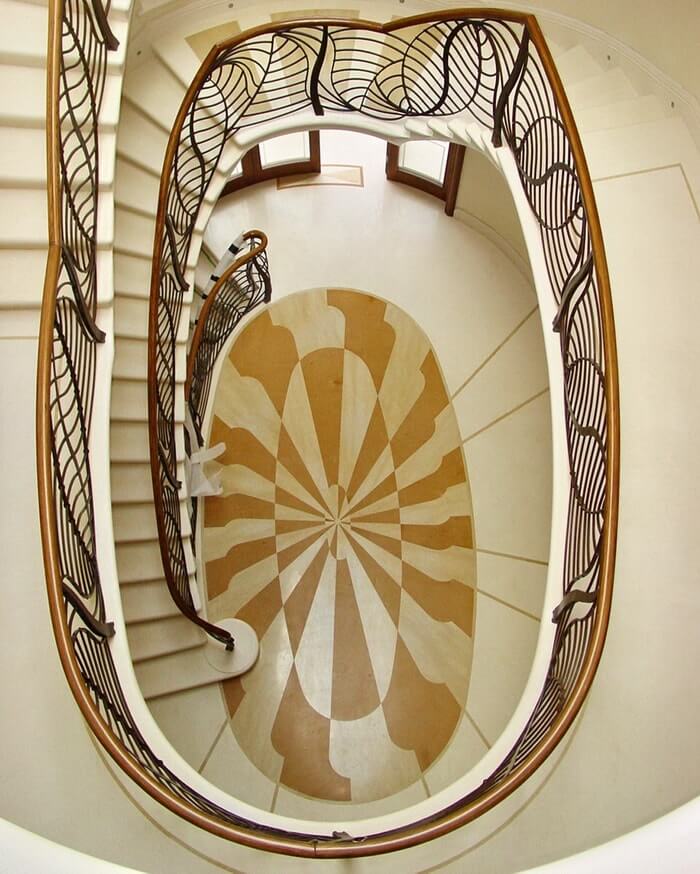
Inlaying
Realization of decorative multicolor compositions: different materials are inserted and set inside an engraved or shaped support remaining visible.
It spread in Italy during the Roman Empire.
MARQUETRY
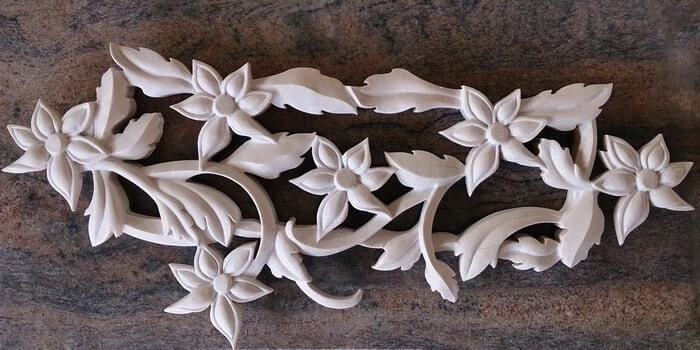
Marquetry
It is slightly different from the inlay because no principal material is used as support. Different marbles with various colors are cut, shaped and inserted together with precision in order to create a decorative drawing.
POLYCHROMY
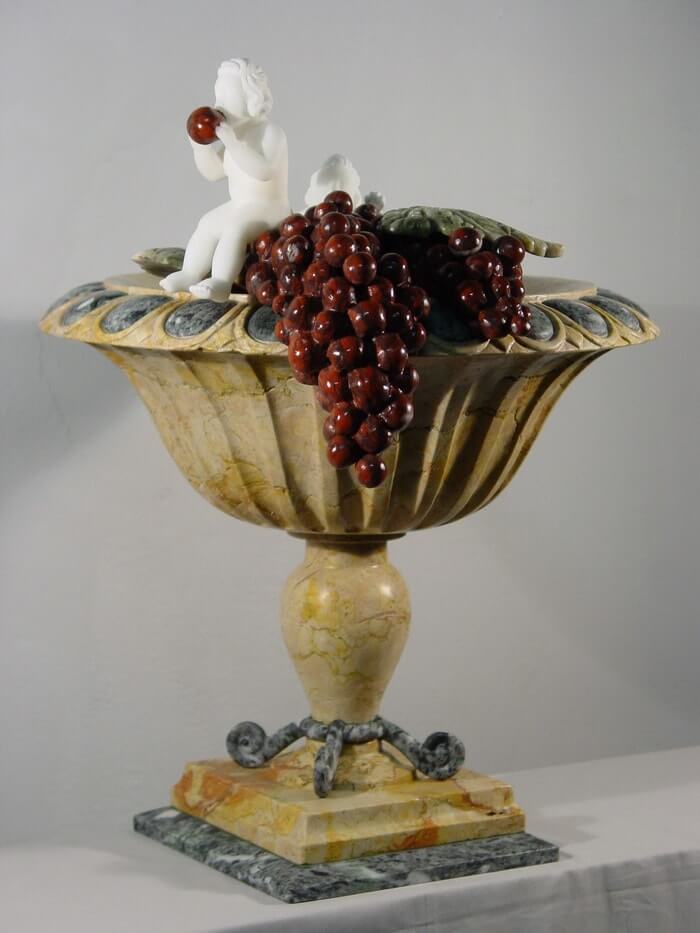
Polychromy
Realization of works using marbles of various colors appropriately combined or contrasting.
Often this technique is used to realize commemorative busts of emperors and consuls.
You can see a bust that we realized in polychromy going to the case history section.
APPLIED ELEMENTS
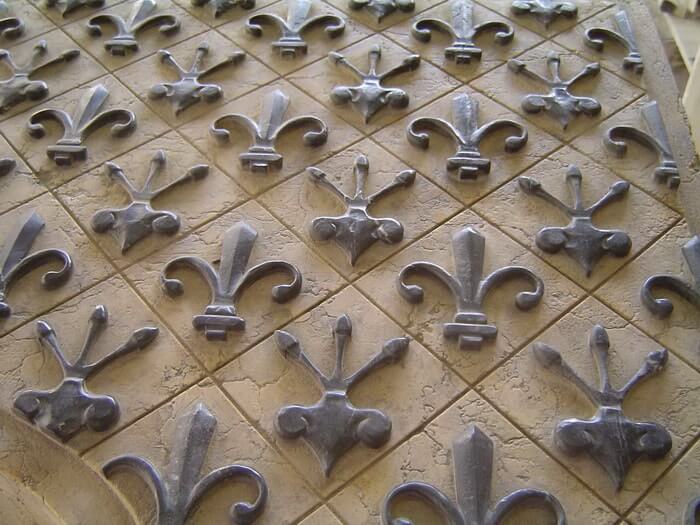
Applied elements
Application of elements, separately realized, through suitable anchorings and gluing as for example: emblems on fireplaces, heads on the keystones and overhanging decorative elements.
They can be in marble or in different materials such as wood, glass, wrought iron and bronze.
PAINTING
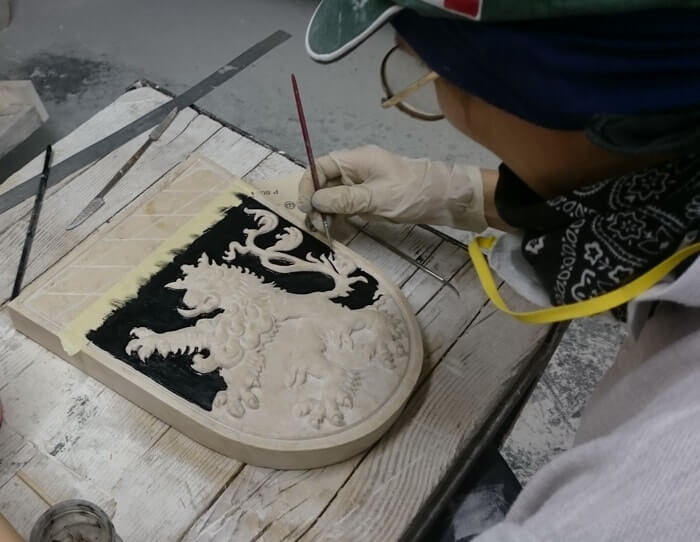
Painting
Decoration of some details, particulars or writings, with tempera, enamels or gold leaf.
In the Egyptian art, almost all the sculptural stone works were completely painted, while the statues in smoothed hard stone preserve traces of polychromy on the dresses.
The whole Greek sculpture was more or less completely painted with various polychrome colors.
BOOK-MATCHED
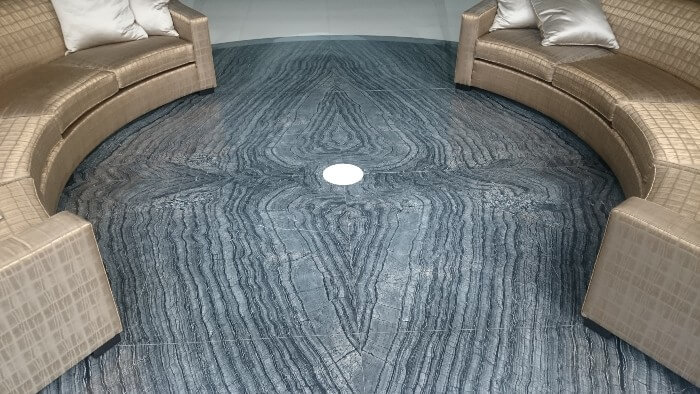
Book-matched
Selection of polished slabs extracted, with consecutive cuts, from a unique veined or brecciated marble block. The combination is made in a specular way in order to enhance the beauty of the veins and to obtain symmetrical drawings, so-called “mirror effect”. An essential operation is the preventive analysis of the project, slabs, dimensions, where the effect is more evident on the big size, cut and combination to guarantee a unique, particular and harmonious result.
The history has bequeathed to us the tools of the artisan “know-how”.
Every activity has its own manufacturing methods, but the secret remains that to have mastery of the technique to let the heart speak and to release the emotions.
Editor’s note
The man has begun to use the stone in the prehistory. He built weapons and tools and he used to tell the events engraving the images, before the arrival of the writing.
It is important for us to use in our workshop the ancient tools and techniques in order to hand down the traditional art.
This article contains general information. For questions and curiosities leave a comment below. If you wish to be contacted, please fill out the form.
